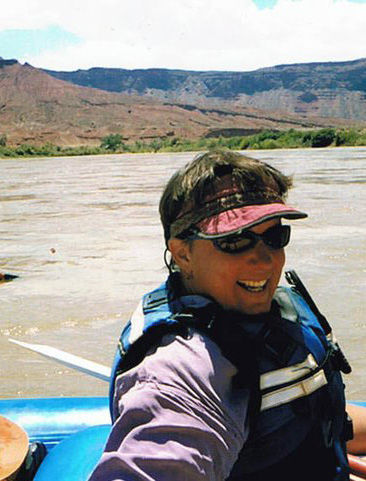Last week, I drove through four national parks, three national monuments and at least four national forests on my way home from the San Francisco Bay Area to Moab.
I intentionally chose a route home that avoided large cities. I love driving across Nevada on Highway 50 through the Basin and Range. This time, I took a southern route that was was pretty close, but there were way more people than on 50. With no time to hike or explore I just paused enough to stretch my legs. So I stopped at overlooks where I usually never stop and I noticed something that mirrors what we see in Moab every day.
First were all the people at viewpoints in Yosemite getting out of their cars staring at their phones. Half Dome in the distance, small patches of snow (still) dotted the landscape, and amazing vistas surrounded them, but their phones were just more compelling. I even watched a few get out staring at their phones, take a fast picture and leave, never really looking around and certainly not smelling the high mountain air.
Then there was the sedan near Mono Lake — off the road 25 feet and buried up to its axle. A kind soul had stopped to help and they were rocking the car back and forth in the deep gravelly sand, leaving their truck running safely on the pavement. It was at least 105 degrees that afternoon.
And then there was Springdale. Traffic was stop and go through that little town as we entered Zion at 11 a.m. on a Tuesday … and through the park, it was well below the posted speed limit and bumper to bumper.
Then, in Red Canyon near Bryce, I paused at a short trail up the slippery talus slope that I have driven by but never stopped to walk. I got to the top of the trail and looked over to all the people following the false trails wearing thin flip flops and wondered how they were gonna get down in the slippery rocks. It reminded me that for so many people a trail in the desert is not obvious, and the lack of dense vegetation makes people think they can just go anywhere.
For the last year, a group of people have been meeting to work through some of the challenges facing our public lands in a location near and dear to many in Moab.
The collaborative group is working with a Rivers Trails and Conservation Assistance facilitator from the National Park Service to develop recommendations for community-supported short- and long-term strategies to manage the impacts of recreational use in Mill Creek.
Some of the issues this group is working on include identifying collaborative strategies and resources to handle recreational use increases; improving access for emergency services or search and rescue; mitigating traffic congestion in nearby neighborhoods; and protecting the sensitive riparian environment and archaeological sites.
This process reminds me of the Mill Creek Partnership work back in 1996. Reading through the historic notes and other information, that effort seems kind of quaint by comparison to what faces the canyon, and the public lands around Moab, today.
My recent trip through many different tourist spots reiterated that we are not alone in facing these challenges. In fact, these challenges are symptoms of a situation much larger than Moab.
When I got back to town, I attended the sales tax reform meeting and was stunned to read that while the state considers a town with an overnight lodging capacity of 66 percent of the permanent population to be a resort community, Moab currently has an overnight lodging capacity currently well over 200 percent of the population.
When the projects currently under construction and vested projects are complete, it will top 278 percent. So these visitor problems in definitely amplified in Moab. And at places like Powerdam, they are extremely intense.
The Mill Creek Community Collaborative (MCCC) has recently collected opinions and information from the public via a survey and will be working over the coming months to use that information to hold some community meetings this fall for further feedback and brainstorming. Please keep an eye out to participate in these opportunities; check out the MCCC Facebook page or website https://moab84532.wixsite.com/mccc, or send an email to betsy_byrne@nps.gov.
Kara Dohrenwend has lived in Moab since 1993. She owns the native plant nursery Wildland Scapes and is the director of Rim to Rim Restoration, a nonprofit dedicated to the reestablishment of native vegetation in the Upper Colorado Plateau.



